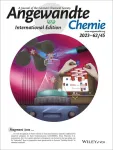(Press-News.org) Differences in health care expenditures between Black and white adults vary substantially with the local level of racial and economic integration, and tend to be low or nonexistent in highly integrated communities, according to a study led by researchers at the Johns Hopkins Bloomberg School of Public Health.
For their study, the researchers compared health care expenditures for a nationally representative sample of Black and white adults in census tracts across the United States. They found that, at the same level of health, health expenditures by Black adults were much lower than white adults’ in census tracts with the lowest levels of racial integration but were virtually the same in tracts where the level of integration was highest. The researchers also found that more-integrated areas also had signs of more equitable health access for Black and white adults.
Individuals’ health expenditures are indicators of people’s health needs and the types of health care they may or may not be able to access. The findings add to evidence that health disparities between Black and white adults are largely attributable to social factors that can be changed.
The study was published online November 3 in JAMA Health Forum.
“Fixing health care disparities may require both health care and non-health care solutions—making sure people have health insurance and that the resources they have based on where they live give them the best opportunities to be healthy,” says study lead author Lorraine Dean, ScD, an associate professor in the Bloomberg School’s Department of Epidemiology. “We already knew from previous research that health disparities mostly disappeared when Black and white adults lived in more equitable areas—now we know that extends to health care expenditures, too.”
Because of external factors—including different levels of exposure to poverty, economic opportunity, health care access, and neighborhood environments—life expectancy, disease risk, health outcomes, and other health care-related measures have long been known to differ between white and Black Americans. Black adults on average have shorter lives and higher rates of common ailments including diabetes, hypertension, and kidney disease.
A 2011 study, also by Bloomberg School researchers including a co-author of the new study, Darrell Gaskin, PhD, the William C. and Nancy F. Richardson Professor in the Bloomberg School’s Department of Health Policy and Management, described a racially and socioeconomically integrated area of Baltimore in which disparities in the rates of hypertension, diabetes, and other health measures were much lower than national averages, and for some measures disappeared entirely. The study used the term “place, not race” to capture the findings.
In the new study, Dean and colleagues addressed the closely related issue of whether health care expenditures vary with the level of racial and socioeconomic integration.
For their analysis, the researchers used data from a 2016 U.S. government survey called the Medical Expenditure Panel Survey (MEPS), which included data on race, socioeconomic status, health status, health care access, health care use, and health care expenditures (including insurer payments) for a nationally representative sample of Americans. The investigators also used data on each MEPS participant’s community levels of racial and socioeconomic integration, based on the U.S. Census Bureau’s American Community Survey (ACS) for 2013–17.
The analysis covered a total of 7,062 adult MEPS participants age 21 or older—one-third of them Black, two-thirds white—living in 2,238 census tracts where the population was at least five percent Black.
For each of these census tracts, the researchers used census data to calculate a measure of socioeconomic and Black/white integration called the Index of Concentration at the Extremes (ICE). They defined this as the number of non-Hispanic white adults in high-income (≥$100,000) households minus the number of non-Hispanic Black persons in low-income (<$20,000) households, divided by the total population with known income in that census tract.
The analysis, which adjusted for potential confounding factors such as age, sex, and education level, found that in communities where the ICE was highest—many high-income white adults, few low-income Black adults—racial disparities in health care expenditures were pronounced. In these relatively non-integrated communities, Black adults spent $2,145 less on health care per year compared to white adults. These differences could reflect undertreatment for Black adults or overuse of health care by white adults. By contrast, in communities where the ICE was in a medium range, indicating the highest level of racial and socioeconomic integration, these expenditure disparities mostly disappeared—the computed difference in overall annual expenditure being a mere $79.
In the least integrated communities, where Black adults had lower overall health care expenditures, they still had levels of physical health similar to white adults’. Their lower overall expenditures were driven mainly by lower doctor’s-office, prescription drug, and dental expenditures. But in highly integrated areas, differences in individual expenditure categories were minimized. The most integrated areas also had relatively equitable health care access, according to MEPS data.
On the whole, the researchers say, the findings suggest that reducing health care expenditure disparities between Blacks and whites is possible, though it might be much easier to achieve in areas where socioeconomic and health care access disparities are minimized.
“Health care expenditures for Black and White US Adults Living Under Similar Conditions” was co-authored by Lorraine Dean, Yuehan Zhang, Rachael McCleary, Rahel Dawit, Roland Thorpe, and Darrell Gaskin.
Funding for the study was provided by the National Institute on Minority Health and Health Disparities (U54MD000214) and the National Heart, Blood, and Lung Institute (R01HL164116).
# # #
END
Black and white adults have similar health care expenditure levels in racially and economically integrated communities
In integrated communities, Black adults spent $79 less than whites on health expenditures per year; in non-integrated communities, Black adults spent $2,145 less on health care per year than whites
2023-11-03
ELSE PRESS RELEASES FROM THIS DATE:
Effect of a novel multicomponent intervention to improve patient access to kidney transplant and living kidney donation
2023-11-03
About The Study: A novel multicomponent intervention designed to target several barriers that prevent eligible patients from completing key steps toward receiving a kidney transplant did not significantly increase the rate of completed steps in this randomized clinical trial that included 20,375 patients from 26 chronic kidney disease programs. Improving access to transplantation remains a global priority that requires substantial effort.
Authors: Amit X. Garg, M.D., Ph.D., of McMaster ...
Vacuum in optical cavity can change material’s magnetic state without laser excitation
2023-11-03
Researchers in Germany and the USA have produced the first theoretical demonstration that the magnetic state of an atomically thin material, α-RuCl3, can be controlled solely by placing it into an optical cavity. Crucially, the cavity vacuum fluctuations alone are sufficient to change the material’s magnetic order from a zigzag antiferromagnet into a ferromagnet. The team’s work has been published in npj Computational Materials.
A recent theme in material physics research has been the use of intense laser light to modify the properties ...
Charged “molecular beasts” the basis for new compounds
2023-11-03
Developing new ways to break and reform chemical bonds is one of the main tasks of basic chemical research. “When a bond in a charged molecule is broken, the result is often a chemically ‘aggressive’ fragment, which we call a reactive fragment. These fragments are difficult to control using established methods of chemical synthesis. You can think of them as untamed beasts that attack anything in their path. In a mass spectrometer, there are many ways to break certain bonds and generate fragments,” says Dr Warneke, describing the processes in mass spectrometers. According ...
BU researcher awarded funds to increase, improve behavioral health care for underserved children, adolescents, young adults
2023-11-03
(Boston)—Carryl P. Navalta, PhD, clinical associate professor of psychiatry at Boston University Chobanian & Avedisian School of Medicine, has received a two-year, $476,194 grant from the U.S. Department of Health and Human Services for his research, “Project EDUCATE” (Education to Deliver and Utilize Child and Adolescent Treatment Effectively).
Project EDUCATE will identify and train mental health counseling students. The student trainees will be placed in community-based facilities in the greater Boston area that serve medically underserved children, adolescents and young adults with diverse race or ethnicity, culture, language and service needs.
“The ...
SwRI-led Lucy mission shows Dinkinesh asteroid is actually a binary
2023-11-03
SAN ANTONIO — November 3, 2023 —New images captured by NASA’s Lucy spacecraft confirmed that the small main belt asteroid Dinkinesh is a binary, two asteroids that orbit a common center of mass. The SwRI-led mission will now fly by 11 asteroids in its 12-year mission to Jupiter’s Trojan asteroids. Dinkinesh was meant to be the first asteroid that Lucy flew by but ended up being the first two.
“Dinkinesh really did live up to its name; this is marvelous,” said Lucy Principal Investigator Dr. Hal Levison, of SwRI’s ...
High-impact clinical trials yield results that could improve kidney care
2023-11-03
Philadelphia, PA (November 3, 2023) — The results of numerous high-impact clinical trials that could affect kidney-related medical care will be presented in-person at ASN Kidney Week 2023 November 1–November 5.
In patients with IgA nephropathy, the IgA protein accumulates and damages the filtering part of the kidney, or glomerulus. Endothelin and angiotensin II contribute to the pathogenesis of this condition through different pathways. The phase 3 PROTECT trial compared sparsentan, a dual endothelin and angiotensin II receptor blocker, with irbesartan, an angiotensin II ...
An exotic tick that can kill cattle is spreading across Ohio
2023-11-03
COLUMBUS, Ohio – A species of exotic tick arrived in Ohio in 2021 in such huge numbers that their feeding frenzy on a southeastern farm left three cattle dead of what researchers believe was severe blood loss.
The scientists from The Ohio State University have reported in the Journal of Medical Entomology on the state’s first known established population of Asian longhorned ticks, and are now conducting research focused on monitoring and managing these pests.
So far, these ticks are not deemed to be a threat to human health. They tend to favor large livestock ...
34,000 healthcare professionals surveyed indicate they have higher bias against transgender people
2023-11-03
By analyzing data from the Harvard Implicit Association Test—a widely accepted measure of a person’s attitudes toward people based on characteristics like race, gender, and sexuality—researchers find that healthcare professionals, and in particular nurses, are more biased against transgender people than are people who are not healthcare professionals. A questionnaire administered before and after the test shows that healthcare professionals are less likely to know transgender people personally and that nurses are more likely to conflate sex and gender identity. These results are reported November 3 in the journal Heliyon.
The Implicit Association Test works by asking participants ...
E-cigarette use among adults
2023-11-03
About The Study: The findings of this study of 414,000 respondents to the 2021 Behavioral Risk Factor Surveillance System survey suggest that e-cigarette use remained common during the COVID-19 pandemic, particularly among young adults ages 18 to 24 (18% prevalence). Notably, 71.5% of individuals ages 18 to 20 who reported current e-cigarette use had never used combustible cigarettes. These results underscore the rationale for the implementation and enforcement of public health policies tailored to young adults.
Authors: Michael J. Blaha, M.D., M.P.H., of the Johns Hopkins ...
Higher parenting stress for dads working from home during pandemic
2023-11-03
A survey from Ann & Robert H. Lurie Children’s Hospital of Chicago found that 40 percent of parents who worked remotely during the pandemic reported higher parenting stress compared with only 27 percent of parents who worked onsite.
Results revealed a gender difference – fathers who worked from home were twice as likely to report that parenting was stressful all or most of the time compared to fathers who worked onsite. Parenting stress for mothers who worked at home was slightly higher, but it did not reach statistical significance.
The study found no differences ...
LAST 30 PRESS RELEASES:
Statins significantly reduce mortality risk for adults with diabetes, regardless of cardiovascular risk
Brain immune cells may drive more damage in females than males with Alzheimer’s
Evidence-based recommendations empower clinicians to manage epilepsy in pregnancy
Fungus turns bark beetles’ defenses against them
There are new antivirals being tested for herpesviruses. Scientists now know how they work
CDI scientist, colleagues author review of global burden of fungus Candida auris
How does stroke influence speech comprehension?
B cells transiently unlock their plasticity, risking lymphoma development
Advanced AI dodel predicts spoken language outcomes in deaf children after cochlear implants
Multimodal imaging-based cerebral blood flow prediction model development in simulated microgravity
Accelerated streaming subgraph matching framework is faster, more robust, and scalable
Gestational diabetes rose every year in the US since 2016
OHSU researchers find breast cancer drug boosts leukemia treatment
Fear and medical misinformation regarding risk of progression or recurrence among patients with breast cancer
Glucagonlike peptide-1 receptor agonists and asthma risk in adolescents with obesity
Reviving dormant immunity: Millimeter waves reprogram the immunosuppressive microenvironment to potentiate immunotherapy without obvious side effects
Safety decision-making for autonomous vehicles integrating passenger physiological states by fNIRS
Fires could emit more air pollution than previously estimated
A new way to map how cells choose their fate
Numbers in our sights affect how we perceive space
SIMJ announces global collaborative book project in commemoration of its 75th anniversary
Air pollution exposure and birth weight
Obstructive sleep apnea risk and mental health conditions among older adults
How talking slows eye movements behind the wheel
The Ceramic Society of Japan’s Oxoate Ceramics Research Association launches new international book project
Heart-brain connection: international study reveals the role of the vagus nerve in keeping the heart young
Researchers identify Rb1 as a predictive biomarker for a new therapeutic strategy in some breast cancers
Survey reveals ethical gaps slowing AI adoption in pediatric surgery
Stimulant ADHD medications work differently than thought
AI overestimates how smart people are, according to HSE economists
[Press-News.org] Black and white adults have similar health care expenditure levels in racially and economically integrated communitiesIn integrated communities, Black adults spent $79 less than whites on health expenditures per year; in non-integrated communities, Black adults spent $2,145 less on health care per year than whites



